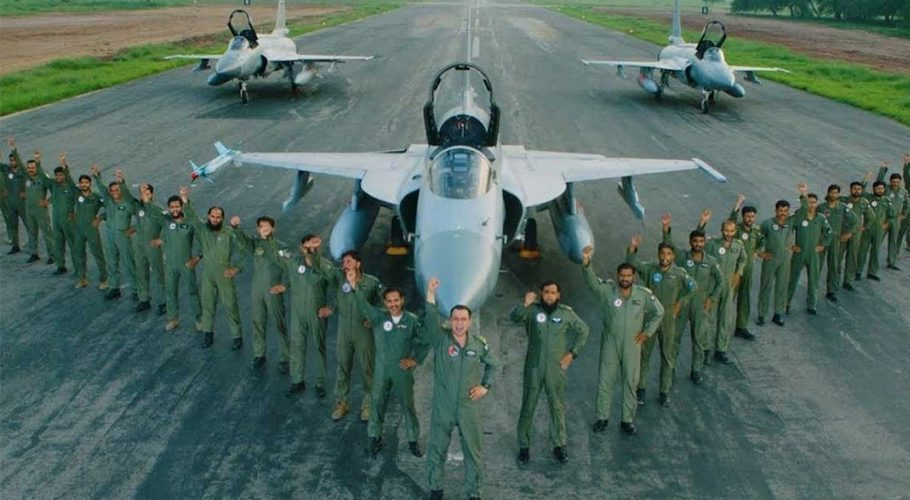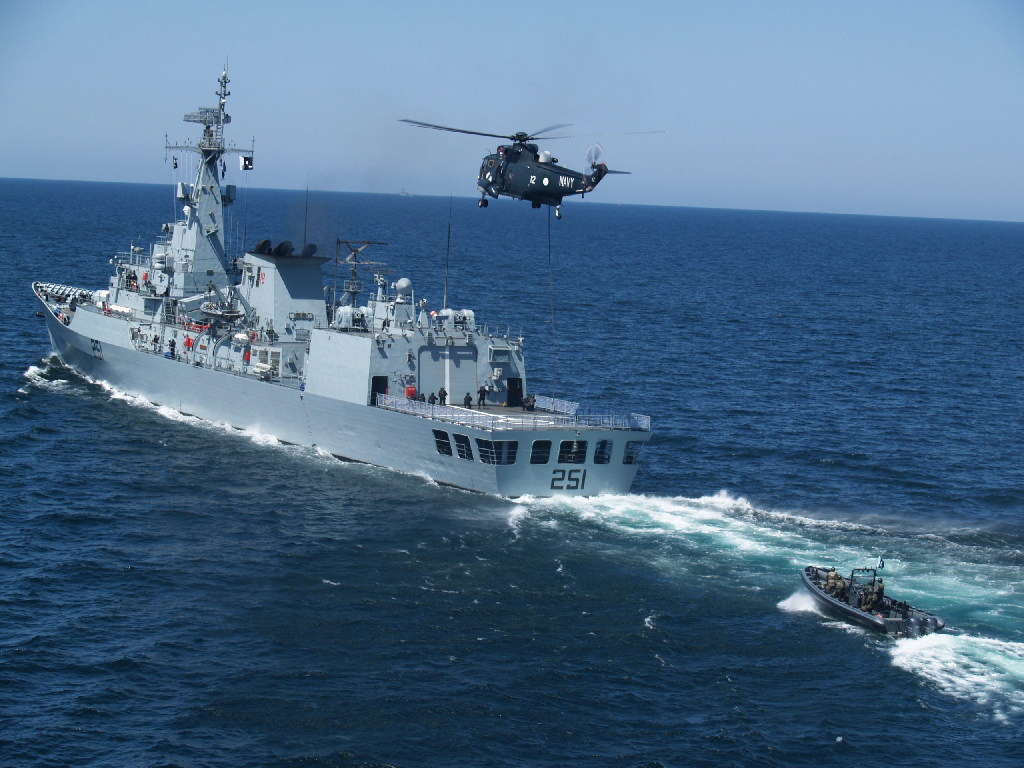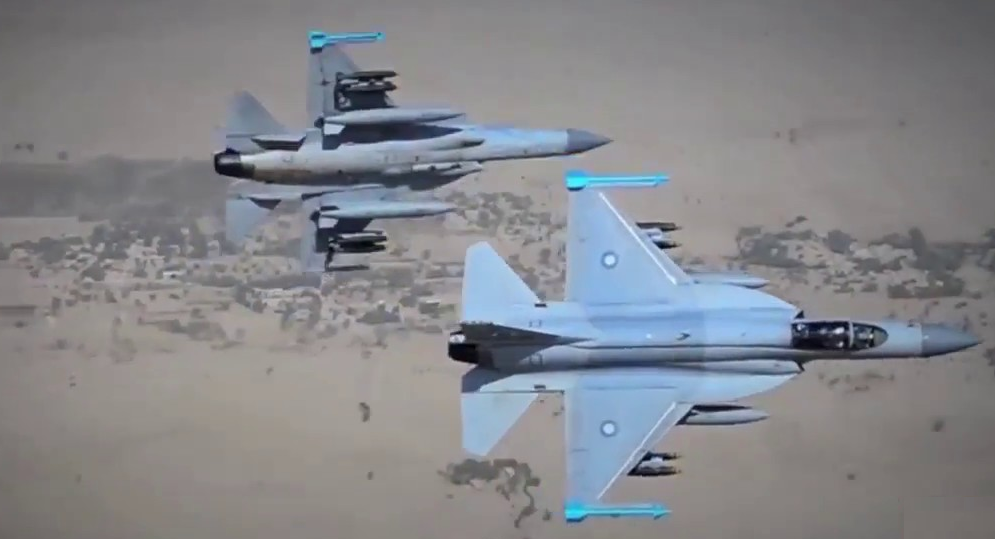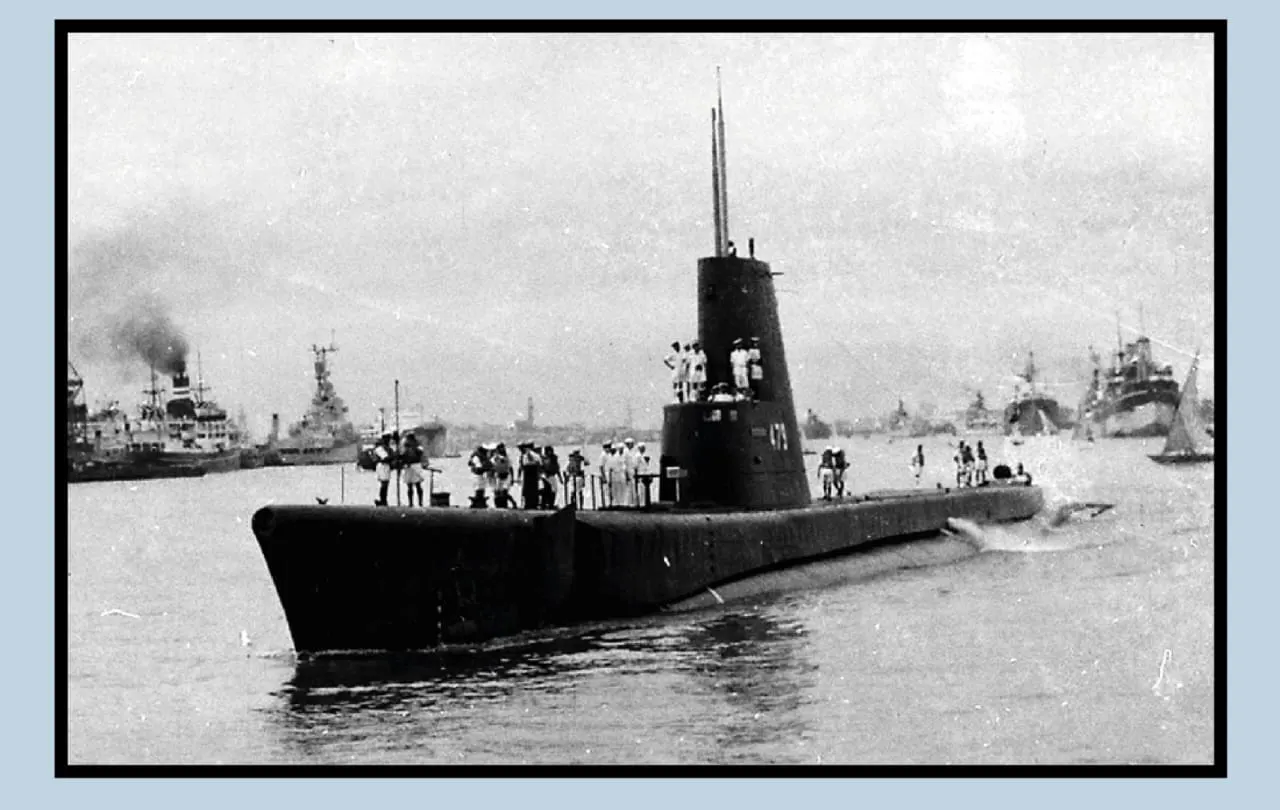Every year, Defence Day is celebrated in memory of the sacrifices the Pakistani armed forces made in the war of 1965. 6 September (Defence Day) is one of the most significant events in the history of Pakistan.
On 6 September 1965, without a formal declaration of war, the Indian army crossed Pakistan’s international frontiers. It was a time when not only our brave soldiers, but the entire nation was thrown into the mold of a cohesive unit to defend our homeland, defeating the Indian Army and pulling them back on every front.
The Detailed Background Behind the 6th September

On September 6, 1965, the enemy invaded our borders with a view to breaching the assaulted areas. It’s been a response to stopping Pakistani military advance in Indian Occupied Kashmir. They were mostly targeting the Lahore, Sialkot, and Sindh desert areas. The war continued until 22 September 1965, when both sides agreed ceasefire supervised by the United Nations.
The War in Kashmir

Events in Kashmir came to a climax, too. Indian Prime Minister Lal Bahadur Shastri added more fuel to the fire by taking measures to further integrate Kashmir into India’s political body and claiming that the Kashmir question occupied a secondary position in effective India-Pakistan relations.
The application to the Kashmir State of Articles 356 and 357 of the Indian Constitution, which allowed the President of India to create and legislate the Presidential Rule in Kashmir, made an attempt to amalgamate Kashmir into the Indian Union altogether.

The Lahore Offensive
At 3:00 AM on September 6, 1965, Indians crossed the international frontier of West Pakistan without a formal declaration of war and launched a three-pronged offensive against Lahore, Sialkot, and Rajasthan. On the Punjab plains, there has been a fierce tank battle. The Indo-Pak dispute at home turned into an international war and raised questions about Super Strength.
Under the auspices of the United Nations, the main diplomatic attempt to stop the fighting was carried out and a truce came into effect on 23 September 1965.
Matchless Achievements of Pakistan Army During the 1965 War
The 1965 Indo-Pak war, a defining moment in the history of Pakistan, stands as a testament to the bravery, resilience, and strategic prowess of the Pakistan Army. The Pakistan Army’s remarkable performance during this war is remembered with great pride and respect by the nation. Here are some key highlights of their achievements:

- Defence of Lahore:
One of the most iconic moments of the 1965 war was the defence of Lahore. On September 6, Indian forces launched a major offensive aimed at capturing Lahore. The Pakistan Army, with unmatched courage and determination, repelled the attack. Despite being outnumbered, the soldiers held their ground and pushed back the advancing Indian forces. The Battle of Lahore became a symbol of national pride, showcasing the spirit and tenacity of the Pakistani soldiers.
- Battle of Chawinda:
The Battle of Chawinda is often regarded as one of the largest tank battles since World War II. Located near Sialkot, Chawinda became the site of a fierce confrontation between Indian and Pakistani armoured divisions. The Pakistan Army’s 6th Armoured Division, supported by infantry and artillery units, displayed remarkable tactical skill and bravery, successfully halting the Indian advance. The victory at Chawinda not only boosted the morale of the Pakistani forces but also marked a significant turning point in the war.
- Strategic Use of Armour and Artillery:
The Pakistan Army’s strategic use of tanks and artillery played a crucial role in neutralizing the numerical superiority of the Indian forces. Pakistani tank units, equipped with Patton tanks, conducted swift and decisive operations that disrupted enemy movements. The effective use of artillery, particularly in providing support during critical battles, demonstrated the Pakistan Army’s tactical acumen and capability to operate under high-pressure situations.
- Valour of Individual Heroes:
The 1965 war produced numerous heroes whose acts of bravery have become legendary. One such hero was Major Raja Aziz Bhatti, who displayed extraordinary courage in the defence of Lahore. Despite being under continuous enemy fire, he led his troops from the front, holding his position until he was martyred. Major Bhatti was posthumously awarded the Nishan-e-Haider, Pakistan’s highest military honour, for his gallantry.
- Aerial Support and Coordination:
The Pakistan Army’s operations were effectively supported by the Pakistan Air Force (PAF), which provided crucial air cover and disrupted enemy supply lines. The coordination between the army and air force was instrumental in achieving tactical superiority on various fronts. The combined efforts of the ground and air forces demonstrated the seamless integration of military strategies and capabilities.
- Psychological and Moral Victory:
Beyond the battlefield successes, the Pakistan Army’s performance in the 1965 war had a profound psychological impact. The ability to defend key cities and inflict significant losses on the enemy boosted the morale of the nation and the armed forces. The war became a unifying force for Pakistan, strengthening national identity and pride. The resilience displayed by the Pakistan Army under challenging conditions resonated with the spirit of the people, reinforcing their trust and confidence in their armed forces.
- Ceasefire and Diplomatic Achievements:
The war culminated in a ceasefire brokered with international collaboration, leading to the Tashkent Agreement in January 1966. While the war did not result in a decisive territorial gain for either side, the Pakistan Army’s ability to defend the nation and prevent any significant territorial loss was seen as a diplomatic and strategic victory. The performance of the Pakistan Army ensured that Pakistan entered negotiations from a position of strength, preserving its sovereignty and territorial integrity.
Pakistan Air Force – Drawing a New History of Air Control in 1965 War
The Indo-Pakistan War of 1965 was a significant challenge for the PAF, testing its ability to defend Pakistan’s airspace against a numerically superior adversary. It was a test of leadership, professionalism, and resolve, requiring the PAF to respond quickly and effectively to an aggressive act that sought to “capture Lahore and enjoy a cocktail party at the Gymkhana.” The PAF played a crucial role in halting the Indian advance towards Lahore, turning the tide as its pilots achieved and maintained air superiority against the larger and more technologically advanced IAF.

Achieving control of the air is essential for success in any air war. This control can be categorized into air supremacy, air superiority, and a favourable air situation, each offering different levels of operational freedom. The key to gaining air dominance lies in strategic operations, including air combat, targeting enemy bases to destroy aircraft on the ground, damaging airfield infrastructure, and providing close support to ground forces.
The 1965 air war between Pakistan and India stands as a testament to the PAF’s effective use of these core principles to secure air dominance. Anticipating military engagement following the 1965 Rann of Kutch skirmishes, the PAF Headquarters issued a war plan in July 1965. This plan outlined a strategy to deny air superiority to India by conducting Combat Air Patrols (CAPs), supporting ground forces, disrupting enemy communication lines, bombing airfield infrastructure, and neutralizing enemy aircraft and radar systems.
From its inception, the PAF has been prepared to counter threats from India. Considering India’s conventional military strength, the PAF has been designed to gain and maintain control of the air by achieving air superiority or at least a favourable air situation over the battlefield and its own territory. Therefore, air combat, ground attack operations, and close air support missions for the army and navy have always been integral parts of the PAF’s strategy. To effectively implement this strategy, the PAF has prioritized air combat training for its pilots and the acquisition of the best possible fighter aircraft and weapon systems within political and financial constraints. Fortunately, the PAF had undergone significant transformation in its capabilities.
As a testament to its valour, the PAF received three Hilal-e-Jurat awards, 45 Sitara-e-Jurat, and 5 Tamgha-e-Jurat, totalling 54 gallantry awards during the 1965 war. Due to the PAF’s remarkable contributions in 1965, it was often said that three As—Allah, Artillery, and the Air Force—saved Pakistan. The air force’s crucial role in repelling the enemy was made possible by its professional excellence, strong leadership traditions, and unwavering commitment to duty. The PAF’s defence of Pakistan’s airspace against its adversary was achieved through a combination of strategic clarity, innovative leadership, extraordinary courage, and an unbreakable spirit, marking one of the finest moments in its history.
The great triumph of the Pakistan Air Force (PAF) during the 1965 war stands as a testament to the nation’s resilience, strategic prowess, and the indomitable spirit of its people. This victory not only secured Pakistan’s airspace but also played a crucial role in protecting the country’s sovereignty during a time of intense conflict. Teaching this achievement in today’s students’ syllabus is vital to instil a sense of national pride and awareness of the sacrifices made by the Pakistan armed forces to safeguard the nation. By learning about the PAF’s bravery and strategic success, students can develop a deeper appreciation for their beloved homaleland’s history, recognize the importance of unity and preparedness, and be inspired by the courage and leadership that characterized one of Pakistan’s finest hours. This understanding fosters a patriotic spirit and prepares the younger generation to contribute positively to the nation’s future.
The Decisive Role Performed by the Pakistan Navy in the 1965 War
During the 1965 war, the Pakistan Navy played a crucial and decisive role in defending the nation against formidable challenges. Operating with exceptional courage and strategic insight, the Navy not only safeguarded Pakistan’s maritime interests but also executed bold operations that shifted the balance of power in the conflict. Its actions, including daring raids and effective naval blockades, significantly impacted the war’s dynamics, demonstrating the Navy’s vital contribution to Pakistan’s defence and its ability to operate with remarkable precision and resilience under pressure. This period marked a defining moment for the Pakistan Navy, highlighting its pivotal role in the nation’s military history and its unwavering commitment to protecting Pakistan’s sovereignty.

Here we explore how the Pakistan Navy supported its sister forces in countering Indian strategies against Pakistan. Often referred to as the ‘Silent Service,’ the Pakistan Navy made its presence known during the 1965 war with remarkable bravery and resilience against a larger Indian Navy. Following the outbreak of the conflict, then-Naval Chief Admiral Afzal Rahman Khan instructed all naval units to adopt defensive positions along the coast. The guiding principle was to be ‘Ready-to-give-battle,’ with Pakistani naval forces tasked with four main objectives: maintaining harbour security, ensuring the safety of merchant shipping, protecting sea lanes, and thwarting Indian attempts to disrupt Pakistan’s maritime commerce.
Initially, the Pakistan Navy took a defensive stance. However, as repeated Indian Air Force raids began to interfere with Pakistan Air Force operations, the decision was made to shift to an offensive approach. To this end, the Pakistan Navy deployed PNS Ghazi, tasked with gathering intelligence on Indian naval movements and addressing the threats posed by the aircraft carrier INS Vikrant.
Additionally, the Pakistan Navy took the fight into enemy waters. One notable operation was the swift artillery raid on Dwarka, which showcased the Navy’s professional expertise. Dwarka, situated about 200 miles southwest of Karachi, was equipped with powerful radar installations that monitored aircraft flights and ship movements. These radars also had the secondary function of detecting potential aerial or naval attacks on Jamnagar and Bombay. The naval squadron that executed the Dwarka attack comprised four destroyers, one frigate, one cruiser, and one submarine.
The attack on Dwarka posed significant security and economic challenges for the Indian government. It raised concerns about the possibility of an amphibious landing on the Indian coast and led to the diversion of some Indian Army and Air Force personnel to Kutch. Additionally, the raid delayed the arrival of merchant ships from the United States and European countries via the Suez Canal by 1-2 weeks, forcing them to reroute to the Cape of Good Hope. In his book “We Dared,” former Indian Naval Chief Admiral Kohli described how Indian naval leadership felt dismayed over the loss of radar systems at Dwarka. The operation was praised as daring and executed in classic style by a British author.
During the conflict, the Pakistan Navy captured a significant amount of enemy cargo, contraband goods, and barges. This included several vessels, such as three large merchant ships—SS Jaira, SS Jendra, and SS Sarsvati at Karachi, and SS Sakeela at Chalna.
The management and disposal of enemy property were conducted in accordance with international law, and all enemy personnel were treated professionally and courteously, as stipulated by the 1949 Geneva Convention.
Throughout the 17-day war, the Pakistan Navy maintained an offensive stance and emerged victorious in its engagement with the Indian Navy with minimal losses. In recent years, the Pakistan Navy has gained increasing significance due to the evolving security landscape in the region and a growing focus on regional maritime security. Acknowledging its crucial role, the Navy is adapting to new realities and preparing for a more robust role in Pakistan’s security.
Commemorating the Pakistan Navy’s remarkable contributions during the 1965 war is not just an act of honouring our military heritage but a vital means of nurturing the spirit of patriotism and national pride among our students. By exploring the bravery, dedication, and sacrifices of naval personnel through interactive and educational activities, we instil in young minds a profound respect for the values of courage and commitment that define our nation’s history. These commemorative efforts serve to inspire a sense of responsibility and unity, empowering students to appreciate their heritage and contribute meaningfully to their country’s future. Through these experiences, we cultivate a generation that is not only aware of its past but also motivated to uphold the values that have shaped our nation.
The Significance of the Defence Day
The 1965 war showcased the Pakistan Armed Forces unmatched bravery, strategic excellence, and unwavering commitment to the defence of the nation. The achievements of the Pakistan Armed Forces during this conflict are etched in the annals of history, serving as an enduring source of inspiration for future generations. The soldiers’ sacrifices and valour not only safeguarded the nation’s borders but also solidified Pakistan’s resolve to stand firm against any aggression. The legacy of the 1965 war continues to inspire the Pakistan Armed Forces, reaffirming their role as the protectors of the nation’s sovereignty and honour.
For students, understanding the significance of the Defence Day is crucial, as it not only highlights the valour and resilience of the soldiers but also instils a sense of patriotism and unity. By incorporating Defence Day into the curriculum, students can learn about the historical events that shaped their nation, the importance of national security, and the values of courage, loyalty, and selflessness. Educating students about Defence Day helps cultivate an informed and responsible citizenry, aware of their beloved homeland’s history and the sacrifices made to ensure its sovereignty and peace. It also inspires them to contribute positively to the nation, reinforcing the idea that each individual has a role in upholding the principles for which their forefathers fought.
